Farm to school programs provide kids access to nutritious, high-quality, local food while creating market development opportunities for local farmers. Yet, a new study by UW–Madison Extension and the UW–Madison School of Human Ecology shows that not all local farmers have equal access to this economic opportunity. This is especially true of historically underserved farmers, a federal designation that includes Black, Indigenous, and People of Color (BIPOC); women; beginning farmers; and veterans who continue to be underrepresented in Wisconsin school food sales.

With funding from a Wisconsin Idea Collaboration Grant, the research team interviewed 38 historically underserved farmers and food producers from across the state. While some of these producers are currently selling to schools, many more indicated they would like to do so if key barriers could be overcome. In a new report, lead study authors Allison Crook, Allison Pfaff Harris, and Jess Guffey Calkins explain how pricing, seasonality, information gaps, and lack of supply chain support make it difficult for underrepresented food producers to sell their products to Wisconsin’s K-12 schools. The authors provide key recommendations for overcoming these barriers and developing mutually beneficial farm-to-school partnerships through investments in policy, infrastructure, and supply chain development.
“We found some pretty big gaps that explain why it can be so difficult to successfully connect school food procurement programs and small, local farmers who may be very passionate about providing healthy, nourishing food to students,” said Guffey Calkins.
“We also found some great examples of meaningful partnerships that developed when the right factors aligned to foster a connection,” added Crook.

Schools looking to serve food that is culturally representative of their population and/or produced closer to the district can use local contracts and assistance programs to buy from nearby farms. But relatively few historically underserved food producers can easily access that pipeline of sales. Local farms that do sell to schools cite an existing relationship or other personal connection to the school system as a key reason for the sales.
Where can producers find support to access school markets? UW–Madison Extension, WI Department of Public Instruction, and WI DATCP have resources and staff to support farm to school in Wisconsin, as do some community groups and local nonprofits, like REAP Food Group and Wello.
Events like the upcoming Wisconsin Chili Lunch happening today on February 22 call attention to the benefits of farm to school procurement. But connecting local food to school cafeterias in this way is only one piece of “farm to school”, which may also include school gardens and food- and farm-based education. Many of the historically underserved farmers in this study indicated a strong interest in providing educational opportunities to students in their communities, particularly in relation to agriculture and food culture, and the report recommends tapping into this educational potential by providing farmer-educators with stipends. Supporting this type of “comprehensive” farm to school programming in Wisconsin would have many benefits related to education, public health, the environment, economic development, equity, and community engagement.
“We hope this report is a call to action for policymakers, schools, producers, and farm to school support organizations to work collectively to maximize these benefits in communities across Wisconsin,” said Dr. Jennifer Gaddis, Associate Professor of Civil Society and Community Studies at the University of Wisconsin–Madison School of Human Ecology. The full report and more information can be found on the Extension Community Food Systems website.



